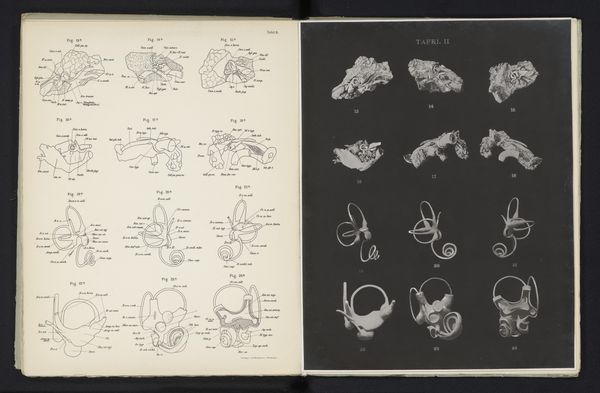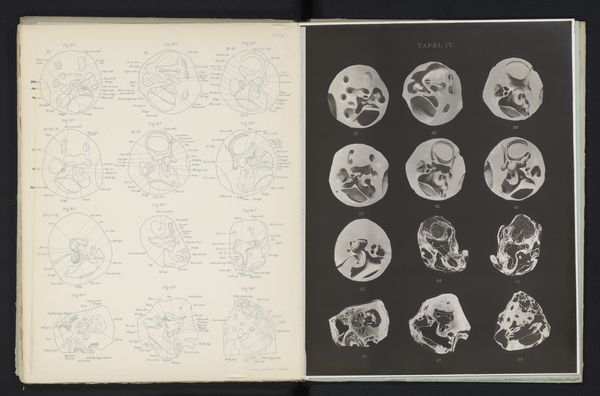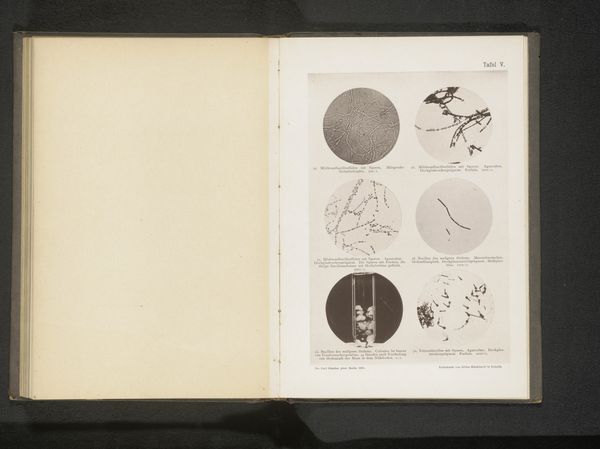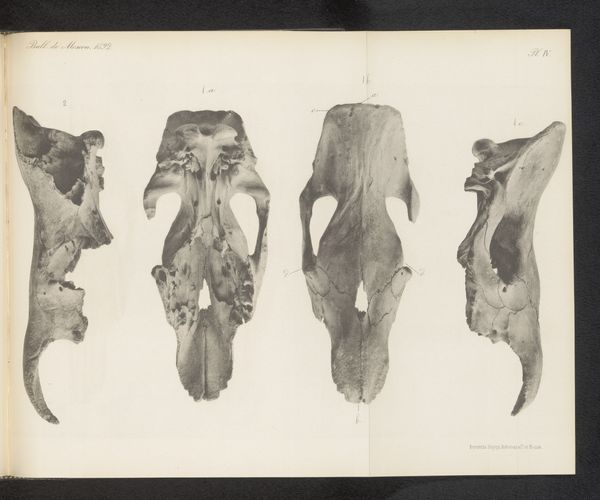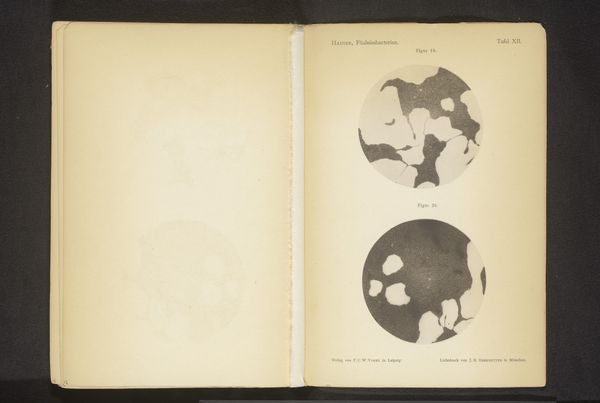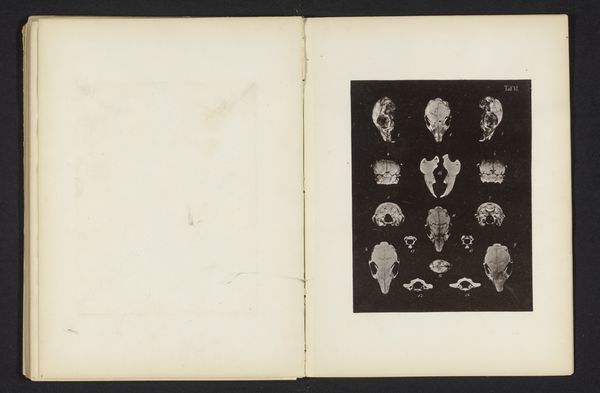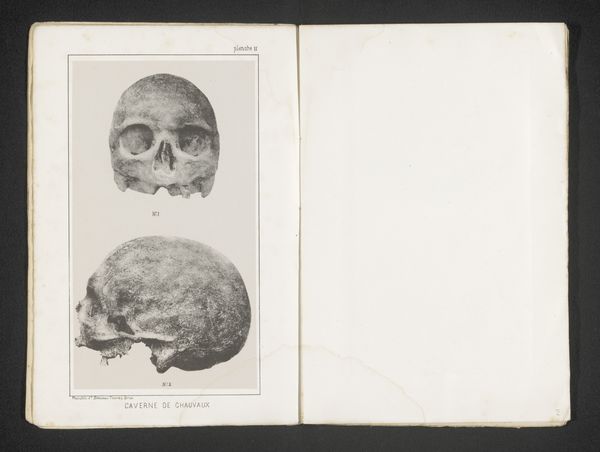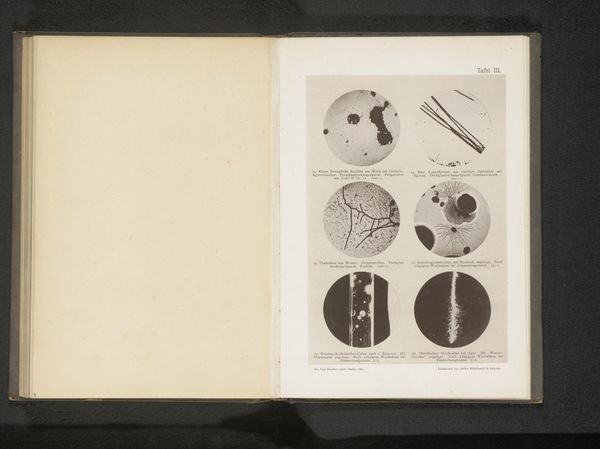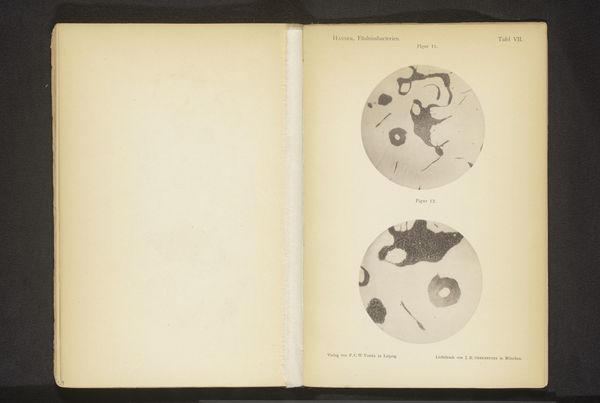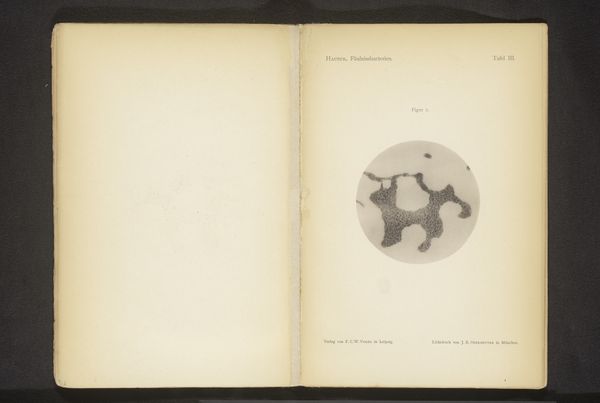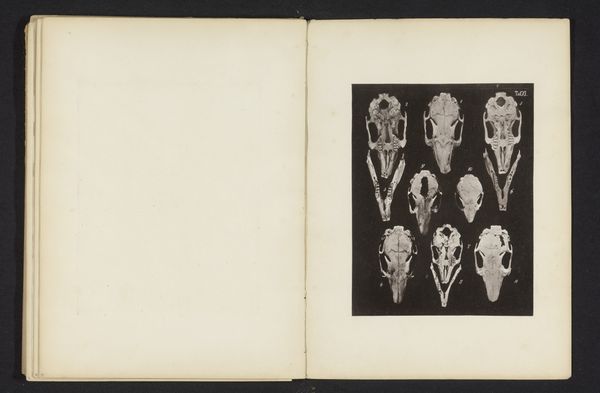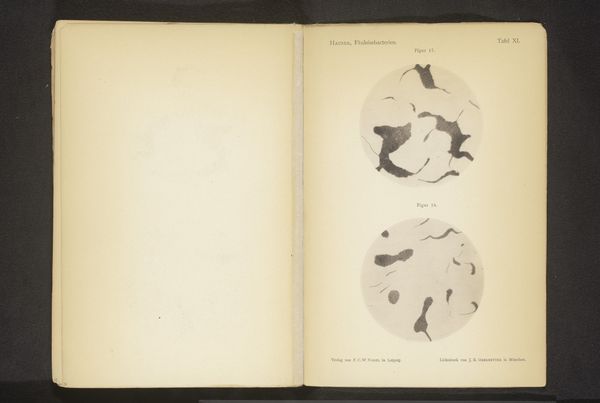
Twaalf preparaten en afgietsels van het menselijk gehoororgaan en de gehoorgang before 1904
0:00
0:00
drawing, print, paper, ink
#
drawing
# print
#
pen sketch
#
sketch book
#
hand drawn type
#
paper
#
personal sketchbook
#
ink
#
pen-ink sketch
#
ink colored
#
pen and pencil
#
pen work
#
sketchbook drawing
#
genre-painting
#
academic-art
#
sketchbook art
#
realism
Dimensions: height 363 mm, width 280 mm
Copyright: Rijks Museum: Open Domain
Curator: Before you is a dual presentation entitled "Twaalf preparaten en afgietsels van het menselijk gehoororgaan en de gehoorgang," which translates to "Twelve preparations and casts of the human auditory organ and auditory canal." Created by Adolf Schönemann before 1904, this work consists of prints on paper in both ink and drawing mediums. Editor: It’s… unexpectedly visceral. The stark contrast of the plates against the dark background is unsettling, almost spectral. Curator: The composition is bipartite, cleaving representation into two distinct modalities. On the left, delicate ink drawings meticulously delineate each element of the ear, identified by labeling with fine lettering and numbers. This illustration method contrasts sharply with the heavy chiaroscuro that dominates the right. Editor: Indeed. The graphic quality, particularly the dark plate, evokes traditional symbols of mortality – skulls and bones – a visual memento mori. Hearing itself is often linked to communication, memory, and even divine guidance; what happens when that’s disrupted, damaged, or gone? The piece encourages a broader cultural response than a solely objective, scientific understanding of a diagram. Curator: I agree with you. By utilizing an economy of line and the strategic placement of labels, Schönemann guides us through a didactic exercise in anatomical rendering. In doing so, Schönemann is building on methods popularized during the Renaissance. Consider the ways in which Da Vinci and Vesalius intertwined anatomical study with artistic representation, emphasizing the intrinsic beauty found within the architecture of the human form. Editor: But by presenting these fragile, porous forms, the drawing evokes a sense of the body's inherent vulnerability. It highlights not only what the ear represents as a symbol of communication, but also, in this context, of sickness and health. The black plate is fascinating, a near shadow world version of those pen sketches. Curator: I concede the symbolic weight these images carry extends beyond mere representational exactitude. By examining this, it grants access to deeper reflections regarding temporality. Editor: And reminds us of the profoundly intimate connections we hold to even our smallest biological structures. Thank you.
Comments
No comments
Be the first to comment and join the conversation on the ultimate creative platform.
